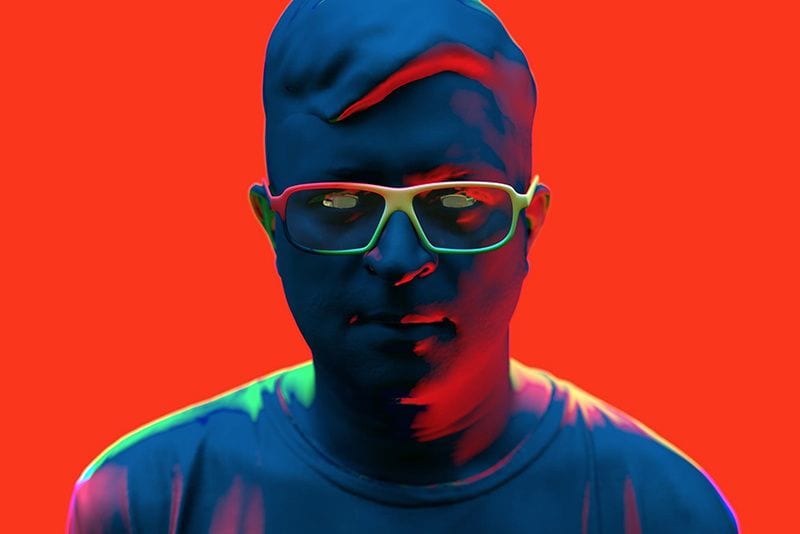
Success doesn’t always come quickly. For every bright young thing, there are a thousand bands and artists slowly chipping away at wider recognition, seemingly destined never to make that connection with a wider audience. After over a quarter of a century in the business, with a career that has seen him explore the glacial rhythms of Global Communication, the hip-hop influenced Harmonic 313 and the more straightforward Troubleman, Australian-based electronic artist, Mark Pritchard, finally came to the attention of many critics and fans alike with his extraordinary Under the Sun album.
From motorik Krautrock beats to haunting balladry to delicate, dreamy ambience, Under the Sun found Mark Pritchard finally comfortable enough to release music under his own name and, as a result, produced, arguably, the finest album of his varied career to date.
That ease has extended to his latest release Four Worlds. An album that works as an extension of his exploration of new sonic terrains that he began exploring on Under the Sun. To that end, Pritchard has again collaborated with acclaimed filmmaker and A/V artist Jonathan Zawada. A collaboration that has also produced a new 13-minute film that delves further into the pair’s imagination as they explore the alien landscapes that they have envisaged as an intrinsic part of their collaboration.
At over 11 minutes in length, opener “Glasspops” is a superb, slowly unfurling minimal techno track that subtly undulates over the course of its runtime. It’s a track that Pritchard has been toying with over the last five years and as such is meticulously put together. “Circle of Fear” is composed of two seemingly opposing keyboard figures, one that grows ever tauter as Pritchard ratchets up the tension while the other altogether lighter, imbued with a real sense of hope and optimism.
“Come Let Us” features a hypnotic, repeated mantra from radio artist Gregory Whitehead backed by gentle washes of ambient chords and tense, gently manipulated synths. In his measured, sonorous voice, Whitehead repeats the lines “Come let us build ourselves a city / And a tower with its top in the heavens / And let us make a name for ourselves / Lest we be scattered abroad/ on the face of the whole earth.” It’s a sample from Whitehead’s experimental “Ziggurat” which featured on his underground cassette Disorder Speech. A collection of experimental material that saw him use analog tape cutting techniques to build often unconventional rhythmic patterns that were very cyclical in nature, something that is a perfect fit for Pritchard’s innovative approach to electronic music. Accompanied by Zawada’s visuals, the track serves as the perfect vehicle for the collaboration between two unique talents.
“The Arched Window” opens with a deluge of cascading, twinkling notes as if a hundred pianos all came to life at the same time. “S.O.S” features psychedelic outsider artist, the Space Lady. Her soft, warm, spoken-word vocals, voice a plea for urgent assistance from other planets as we (the people of earth) have done untold harm to the planet. The closing, pertinent point is that the help the planet needs can only be gained from within rather than looking for help from the cosmos. Despite the obviously apposite ecological message, the song quickly loses its effectiveness on repeat listenings although it ably demonstrates Pritchard’s more dadaistic, experimental side.
The otherworldly ambience of “Parkstone Melody II” evokes the swoop of the camera over Zawada’s craggy canyons and psychedelic rock faces before segueing gently into “Mên-an-Tol” which sounds like it could have been beamed in from a distant planet. On album closer, the titular “Four Winds”, Pritchard creates a remote and isolated sense of place as faraway gongs reverberate then fade while wintry synths drift like the breath of chilly winds.
Four Worlds sees Pritchard obliquely navigate through imagined landscapes. It is an often beguiling listen and shows a furtive mind at work. The music zigzags from the avant-garde to minimal techno via leftfield ambience, and while it works beautifully on its own, it’s when coupled with the visuals that it becomes something extraordinary. It’s album for those intrigued enough to journey on beyond the sonic landscapes of Under the Sun.

